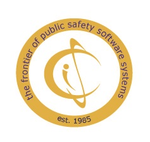What Is Law Enforcement Software?
Law enforcement software is a comprehensive system created exclusively for law enforcement agencies and departments to help them run their everyday operations more efficiently. It provides a variety of digital tools and capabilities to assist police officers, detectives, and other law enforcement personnel in their daily operations. One of the primary goals of law enforcement software is to simplify the process of managing and organizing case data.
This may entail storing and indexing evidence, processing witness statements, and monitoring the status of ongoing investigations. By digitizing this information, software reduces the need for old paper-based methods, allowing officers to access and communicate essential information more rapidly. Another important characteristic of law enforcement software is the capacity to generate reports and analyses.
This can include automatically generating offensive reports as well as developing data visualizations and dashboards to help with strategic decision making. By automating the reporting process, this program saves officers time and allows them to focus on their primary tasks. One of the most important features of law enforcement software is its capacity to assist with crime prevention and public safety.
Some software solutions include predictive analytics and real-time crime mapping to help discover patterns and potential dangers. These characteristics allow law enforcement authorities to respond proactively and prevent crime before it happens, making communities safer. Additionally, law enforcement software can assist with resource management. This may include scheduling and dispatching officers, controlling their assignments, and monitoring their activity. By centralizing this information, software allows agencies to effectively utilize their resources, ensuring that cops are placed where they are most needed.
What Are The Recent Trends In Law Enforcement Software?
In recent years, technological improvements have had a significant impact on the field of law enforcement. As a result, law enforcement organizations are increasingly relying on software and digital tools to help with crime prevention, investigation, and general operations. As a potential consumer of law enforcement software, you should stay up to date on the current advancements in this field.
We will analyze recent trends in law enforcement software, allowing you to make an informed decision when acquiring new software for your agency.
1. Integration Of AI And ML: One of the most important trends in law enforcement software is the incorporation of AI and ML. These technologies are being used to improve the efficiency and efficacy of numerous processes inside law enforcement organizations. For example, AI-powered predictive analytics can help discover criminal hotspots and patterns, whereas facial recognition technologies can help identify suspects. Furthermore, ML algorithms are being utilized to automate administrative chores like data entry and report writing.
2. Cloud-Based Solutions: As law enforcement organizations collect more data and digital evidence, there is a greater demand for dependable storage and management solutions. As a result, law enforcement agencies are increasingly using cloud-based technologies. These technologies provide secure and centralized storage for data and evidence, facilitating simple access and collaboration among police and departments.
3. Mobile Applications: Another trend in law enforcement software is the creation of mobile apps. These applications give authorities real-time access to crucial information like criminal records, warrants, and mapping tools. They also facilitate effective communication and coordination among officers on the field. Some apps even have capabilities for collecting and submitting digital evidence, which reduces the need for paper-based paperwork.
4. Focus On Data Security: As law enforcement agencies continue to gather and keep sensitive information, there is a growing emphasis on data security. This has resulted in the creation of software solutions with advanced encryption and data protection features. Furthermore, many software vendors provide regular upgrades and maintenance to protect the security of their products.
5. Customization And Interoperability: Law enforcement agencies have distinct needs and requirements, and software solutions are becoming increasingly adaptable to suit these demands. Furthermore, there has been a growing emphasis on interoperability, which means that diverse software systems may communicate seamlessly. This enables greater data exchange and collaboration among agencies, increasing overall efficiency and effectiveness.
Benefits Of Using Law Enforcement Software
The ever-changing world of crime and security presents law enforcement organizations with new difficulties on a regular basis. To keep ahead in the fight against crime, law enforcement agencies must now have access to cutting-edge technology. One such tool is law enforcement software, which is specifically built to meet the needs of law enforcement organizations.
Here are some significant advantages of adopting law enforcement software, which make it a vital investment for any modern law enforcement department.
1. Streamlines Case Management: One of the most major advantages of adopting law enforcement software is that it improves case management efficiency. It enables agencies to manage and organize case files, evidence, and other critical data in a one area. This not only improves the efficiency of the procedure, but also aids in the preservation of the chain of custody for evidence.
2. Improves Data Analysis: Law enforcement software has powerful data analysis tools that allow agencies to detect patterns and trends in criminal activity. This provides crucial insights that can be used to prevent and investigate crimes.
3. Increases Efficiency And Productivity: Law enforcement software, which includes capabilities such as automated report production and real-time data access, can considerably improve the efficiency and productivity of law enforcement organizations. This saves vital time and resources, which may then be used to other critical duties.
4. Promotes Collaboration: Law enforcement software enables numerous agencies to work together and securely share information. This is especially effective in cases involving various jurisdictions because it removes the need for manual communication and expedites the investigation process.
5. Improves Officer Safety: Law enforcement software can help officers in the field by providing immediate access to critical information including criminal records and warrants. This not only enhances officer safety, but also guarantees that they have the information they need to handle crises successfully.
6. Offers A Mobile Solution: The greatest law enforcement software includes a mobile app that enables officers to access crucial information on the go. This is especially valuable for officers on the streets, as it gives them immediate access to critical data and updates.
Important Factors To Consider While Purchasing Law Enforcement Software?
When selecting law enforcement software, you need examine numerous criteria to ensure that you make an informed and effective decision. The correct software can significantly improve the skills and efficiency of law enforcement agencies, but selecting the wrong one can lead to irritation and setbacks.
As a professional content writer, I've developed a list of crucial considerations to consider while choosing law enforcement software.
1. Compatibility: One of the most important elements to examine is the software's compatibility with your current systems and devices. Before making a purchase, make sure to properly check the system requirements and compatibility.
2. Functionality: Evaluate the software's functionality to evaluate whether it satisfies your law enforcement agency's specific demands and objectives. Look for capabilities like incident reporting, case management, evidence tracking, and criminal analysis to ensure that the program meets your agency's needs.
3. User-Friendly Interface: Law enforcement officers frequently work in high-stress conditions and may not have the time to spend hours mastering sophisticated software. As a result, it is critical to select software with a simple, easy-to-use interface that requires no training.
4. Data Security: Given the sensitive nature of law enforcement work, data security should be prioritized while acquiring software. To secure confidential information, ensure that the software includes strong security mechanisms like encryption and access controls.
5. Scalability: When picking law enforcement software, consider your agency's future development and needs. It should be able to scale and adapt to the agency's changing needs and rising workload as it grows.
6. Customer Support: Before purchasing any product, it is critical to analyze the company's customer support. Look for a vendor who provides dependable and rapid technical assistance to guarantee that any difficulties or concerns are resolved quickly.
7. Cost: Law enforcement software may be a considerable investment for an agency, therefore it is critical to thoroughly consider the cost and usefulness of the program. Consider the long-term benefits and ROI, not simply the initial expense.
Keeping these considerations in mind allows law enforcement organizations to make an informed and productive software purchasing decision. It is also recommended that you seek suggestions from other agencies and study reviews from reliable sources to learn more about the software's functionality and user experience. Remember, the correct software can significantly improve a law enforcement agency's capabilities while also contributing to community safety and security.
What Are The Key Features To Look For In Law Enforcement Software?
When looking to buy law enforcement software, it is critical to evaluate many essential elements that will ensure its usefulness and efficiency in assisting law enforcement organizations.
The following are the top features to look for in law enforcement software.
1. Comprehensive Case Management: The software should include a powerful case management system that stores all relevant information about cases, suspects, evidence, and witnesses in a centralized and structured way. This feature enables easy access and collaboration between many departments and agencies.
2. Real-Time Data Sharing: The program should allow you to share data in real time with different agencies and departments. This capability is especially important when various law enforcement agencies are engaged on the same issue, as it allows for seamless coordination and faster reaction times.
3. Document Management: The capacity to handle and securely keep documents is an essential aspect of law enforcement software. This includes storing reports, forms, and other administrative records to ensure simple retrieval and prevent illegal access.
4. Analytics And Reporting: Advanced analytics and reporting technologies are critical for discovering patterns, trends, and correlations in data, allowing law enforcement to make informed decisions. To gain the most relevant insights, look for software that allows you to customize your reports and dashboards.
5. Mobile Access: Given the growing use of mobile devices in law enforcement, it is critical to identify software that provides mobile access. This allows cops to access crucial data and execute duties in the field, increasing efficiency and decreasing paperwork.
6. 24/7 Technical Support: Law enforcement requires ongoing availability and support, thus the software should include dependable and quick technical support that is available around the clock. This guarantees that any bugs or technical challenges are rectified swiftly, reducing downtime.
7. Secure Data Storage: The sensitive nature of law enforcement data necessitates stringent security protocols. To protect against potential cyber threats, the program should use comprehensive security mechanisms such as encryption, user access controls, and safe storage.
8. Integration With Current Systems: To avoid disruptions and costly data transfers, the software should be easy to integrate with current systems and databases. This enables for a smooth transition and keeps all data current and accurate.
Why Do Businesses Need Law Enforcement Software?
Businesses of all sizes and industries frequently face legal challenges and the need for law enforcement help. Traditional paper-based systems and manual procedures can be time-consuming and prone to errors, resulting in inefficiency and sometimes costly outcomes for enterprises. Here's where law enforcement software comes in. Law enforcement software is intended primarily to assist businesses in managing and streamlining their dealings with law enforcement authorities and legal concerns.
This type of software usually contains features like case administration, data analytics, reporting, and communication tools. One of the primary reasons firms want law enforcement software is to maintain compliance with laws and regulations. This program can track and monitor legal needs, such as permits and licenses, to ensure that the business is compliant with the law.
In addition, law enforcement software can save firms time and money. Businesses can save time and dollars by automating and centralizing legal processes. This allows firms to focus on their core operations rather than spending numerous hours on paperwork and administrative tasks. In the event of a legal issue, law enforcement software can assist firms in gathering and organizing evidence, making it easier to present a compelling case in court.
This can ultimately result in a faster resolution of the disagreement, saving the company even more time and money. Furthermore, given the surge in cybercrime and data breaches, businesses must emphasize security and data protection. Secure document storage and access restrictions are common aspects of law enforcement software, assisting firms in safeguarding important legal information.
Overall, investing in law enforcement software allows organizations to improve their legal compliance, save time and resources, and strengthen their security and protection. It is an invaluable resource for any organization looking to manage legal issues efficiently and effectively.
How Much Time Is Required To Implement Law Enforcement Software?
The time required to implement law enforcement software varies according to the software and the agency's demands. The implementation procedure can last anything from a few weeks to many months. Planning is the initial stage in adopting law enforcement software. This includes analyzing the agency's specific needs and goals, finding suitable software solutions, and developing a detailed implementation strategy.
Next, the program must be installed and configured to fulfill the agency's requirements. This can include creating user accounts, customizing dashboards and reporting, and integrating with existing systems. Training will be a crucial component of the implementation process. The agency's staff and people will need to be instructed on how to use the program properly. This can be accomplished through in-person training, online lessons, or a combination of the two.
Data migration is an important phase in the implementation process. This includes transferring data from existing systems to the new software. It is critical that this is completed precisely and efficiently so that the agency can continue to have seamless access to critical information. The final stage after installing and configuring the software and training the staff is to go live.
This can include a period of parallel testing, in which both the old and new systems are utilized concurrently to check that the new software works properly. Once everything is in working order, the agency can fully move to the new program. The amount of time necessary for each stage of the implementation process varies depending on the software's complexity, the size of the agency, and the available resources. It is critical to collaborate closely with the software vendor to establish a realistic timeframe and handle any issues that may develop during the deployment process.
What Is The Level Of Customization Available In Law Enforcement Software?
The level of customization available with law enforcement software varies according to the product and vendor. However, in general, law enforcement software allows for extensive customization to fit the unique goals and requirements of law enforcement agencies. First and foremost, law enforcement software is intended to be versatile and adaptive. This means that it can be tailored to meet the specific workflows and processes of a certain agency.
For example, some software may have pre-built templates and forms, whilst others allow users to develop their own bespoke forms and documents. In addition to customization within the software, law enforcement software companies give various levels of customisation for data and reporting. This includes the ability to design custom reports and dashboards, as well as interact with other systems and data sources.
This enables agencies to have a completely customized and comprehensive view of their data. Furthermore, law enforcement software can be tailored to the specific requirements of individual divisions within an agency. For example, a narcotics section may require distinct features and functionalities than a traffic division. Most software suppliers allow you to configure user roles and permissions, providing different levels of access and capability based on departmental requirements.
Another factor to consider is the amount of technical assistance and training offered by law enforcement software vendors. Many companies provide on-site training and continuing assistance to help organizations completely modify and use the software to its maximum capacity. This includes helping you build up bespoke features and workflows, as well as debugging any issues that may emerge.
Which Industries Can Benefit The Most From Law Enforcement Software?
Law enforcement software is a strong instrument that can streamline and improve law enforcement processes, resulting in more efficiency and effectiveness in their operations. With technological improvements, law enforcement software has evolved into a crucial asset for numerous industries, providing them with the tools and resources they need to complete their work successfully.
We'll look at which industries can gain the most from law enforcement software and how it can be a worthwhile investment for your firm.
1. Public Safety: Public safety is a broad phrase that refers to a variety of businesses, including law enforcement, fire departments, emergency medical services, and security. The major goal of these organizations is to protect the people and keep them safe. Law enforcement software can help these businesses by offering a consolidated platform for accessing and managing essential data including crime statistics, incident reports, and dispatch information. This allows them to respond to emergencies faster, make more educated judgments, and increase overall public safety.
2. Government: Government agencies at the federal, state, and local levels are in charge of implementing laws and preserving order in their respective areas. As a result, these organizations can tremendously benefit from law enforcement software, which allows them to detect and monitor criminal activity, manage case records, and effortlessly communicate data with other agencies. The integration of law enforcement software with other government databases and systems facilitates agency collaboration and coordination, resulting in increased public safety.
3. Transportation: The transportation business, which includes airports, seaports, and public transportation systems, faces a number of challenges, including terrorism, smuggling, and illegal immigration. Law enforcement software gives transportation companies the tools they need to detect and prevent threats while also ensuring the safety and security of passengers and cargo. Law enforcement software, which includes capabilities like facial recognition, license plate identification, and real-time tracking, allows transportation authorities to quickly identify and respond to possible dangers.
4. Education: Law enforcement software can also aid the education industry, notably schools and universities, which frequently have their own campus security and police agencies. These departments can use law enforcement software to manage incident reports, track campus activity, and identify potential threats. Furthermore, integrating law enforcement software with campus emergency notification systems can provide a speedy and effective means of communication during an emergency, hence boosting student and staff safety.
Conclusion
To summarize, investment in law enforcement software is critical for any modern law enforcement organization. Given the ever-changing landscape of crime and technology, having the correct software can significantly improve the efficiency, accuracy, and overall efficacy of law enforcement operations. Throughout this buyer's guide, we've covered the most important features and factors to consider when purchasing law enforcement software.
Before making a decision, you must first examine your agency's specific demands and budget. Furthermore, conduct thorough study and comparisons of various software solutions, taking into account elements such as data security, usability, and customer support. Request demos and references from other law enforcement agencies to ensure you make an informed selection.
Finally, investing in high-quality law enforcement software can improve crime prevention, case management efficiency, and departmental collaboration. Keep this guide available while you traverse the process of choosing the best software for your agency, and we hope it helps you make an informed and productive decision.






















